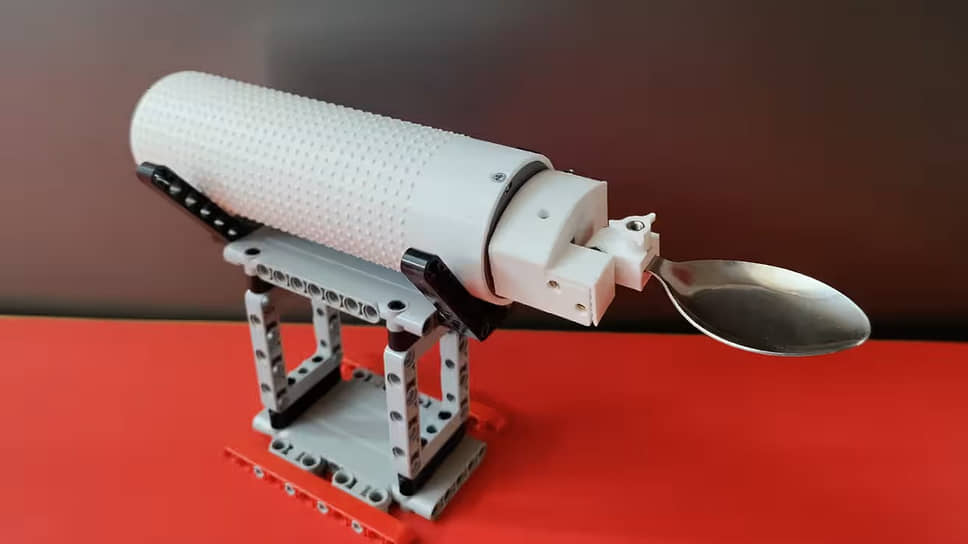what is it and what is it for?
[ad_1]
Last week, researchers at the American Purdue University said that in the next 15-20 years, the need to use smartphones not only to access the Internet, but also to perform many daily actions, such as transferring and saving files and other data, paying for goods and services, may disappear. , adjusting smart home systems, etc. All this can be done using the “Internet of Bodies,” which has recently been actively developing along with the “Internet of Things.”
Biped without feathers and with Internet access
“Right now, our gateway to the Internet is a small device in our hands. We look into this box all the time, walk around with our heads down and spend a significant part of our time on it. If we do not want such a future further, we need to develop technology— stated last week, Purdue University Associate Professor Shreyas Sen. “Instead, we can make sure that smartphones can be disassembled into parts that will be located in different places on our body.” Only these parts will be so miniature that they cannot be seen with the naked eye.”
Researchers note that this “disassembly of the smartphone into parts” has, in fact, already begun. We are talking about wearable smart devices that take on some of the functions of a smartphone. Using a smartwatch, you can answer calls, read messages, control your player, check the weather, etc. However, the key feature of a smartphone is still the screen to which a person is tied.
Shreyas Sen’s lab has developed two experimental systems that enable more active use of the human body, increasingly eliminating the need for a smartphone.
A system called Wi-R creates a signal inside the body that can be used to connect a variety of devices, such as smartphones, laptops, smart watches, insulin pumps and other mobile or wearable devices. This Internet can be distributed to other people’s devices, as well as instantly connect wireless headphones and other peripheral multimedia devices. And you can transfer data, for example send files, photos/videos, simply by touching another person with your hand.
Another invention of the laboratory is special brain implant, which will be able to send commands literally with the power of thought, which expands the capabilities of Wi-R, almost completely eliminating the need to use conventional mobile devices. Nature magazine turned on the discovery of Purdue University among the main achievements of the computer neural interface – along with other developments in this actively developing areas.
Battery Man
The term “Internet of Bodies” (IoB) appeared back in 2016, when devices that received, processed and transmitted biometric data – pulse, pressure, temperature, oxygen content in the blood, etc. – began to enter the mass market. Many researchers include the “Internet of the body” into the broader concept of the “Internet of Things” (IoT). IoB includes all devices and applications that use the body both as a carrier and a source of information for transmitting and analyzing data using the Internet. Thus, IoB devices include popular wearable gadgets (smart watches, fitness bracelets), as well as special medical devices – a wearable insulin pump, implants that transmit health information and related software.
However, recently, researchers have increasingly shared “Internet tel”based primarily on medical data, and IoB systems, designed to perform broader functions, including when working with the latest 6G mobile Internet standard. For example, researchers at the University of Massachusetts Amherst declare, which can use the human body as a tool to recharge mobile devices operating in the 6G standard. One of the properties of the sixth generation of communications is Visible Light Communication technology (VLC) – when the light source, in addition to the lighting itself, is capable of transmitting information, i.e. a wireless analogue of optical fiber.
University engineers have invented a fairly cheap way to collect residual energy from light-emitting diode (LED) light sources using VLC technology in 6G networks. This energy is collected using copper microantennas, which can be wound into spirals or ribbons. Experiments showedthat such antennas collect and store more energy from LED sources if they come into contact with another electrically conductive substance or object. Such an object could be the human body.
In this way, a person transfers the energy collected from the VLC to other devices. That is, a person can recharge the gadget simply by holding it in their hands.
“VLC technology is quite simple, but very interesting,” says Zhe Seng, a professor in the Department of Information and Computing Systems at the University of Massachusetts at Amherst. “Instead of transmitting data via radio waves, VLC uses a stream of light from LED sources. The important thing is that the infrastructure for such sources already exists everywhere: LED lamps, lamps, screens are in homes, on the street, in offices. But if now they simply perform the lighting function, then later they will also transmit data. And everything that is in our hands, be it a smartphone, tablet or laptop, will receive this information.”
After a series of experiments, a team of university scientists created Bracelet+ – a thin copper tape twisted into a spiral, which is worn on the hand like a bracelet and collects energy from LED sources operating using VLC technology in 6G networks. Scientists say that such a bracelet costs no more than $0.5, but can transmit energy through the human body that can recharge many sensors, such as those installed in medical devices for continuous wear. This eliminates the need to use batteries, significantly making such a medical device cheaper and lighter.
[ad_2]
Source link









